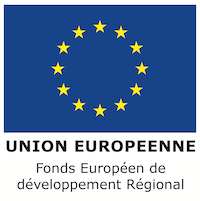Little is known about the molecular dialogue between the plant and an invading virus. With Michael Wassenegger at AlPlanta (Neustadt, Germany) and César Llave at CIB-CSIC (Madrid, Spain) as partners, Manfred Heinlein at IBMP applied a combinatorial genome-wide approach to identify networks of small RNA-guided post-transcriptional gene regulation within local viral infection sites in oilseed (Brassica napus) leaves. The observations provide astonishing new insights into the complex regulatory networking at the plant-virus interface within cells undergoing early stages of infection. This work was published in the journal Communications Biology on November 23, 2020.
Virus-induced plant diseases in cultivated plants cause important damages in yield. To enable novel approaches in plant protection, it is important to understand the molecular mechanisms by which viruses spread their infectious genomes from one cell to the next and thereby cause systemic infection. However, whereas the cell biology of virus cell-to-cell movement is intensely studied at the microscopical level, only little is known about the molecular dialogue between the invading virus and the host genome. Growing evidence suggests that plant viruses interfere with small RNA-mediated regulatory pathways to promote changes in gene expression in infected tissues. However, because such cross-talk interaction between plants viruses and RNA silencing has been primarily studied in systemically infected plants, very little is known about the regulatory layers that operate between the virus and host cells at the infection front.
To gain insight into the molecular dialogue between virus and host at the infection front, Manfred Heinlein of the IBMP coordinated a trinational research network (Plant-KBBE « GAMAVIR ») with Michael Wassenegger (AlPlanta, Neustadt, Allemagne) and César Llave (CIB-CSIC, Madrid, Espagne) as partners to determine the role of small RNA-mediated gene regulation at the spreading front of infection by Turnip mosaic virus (TuMV) within leaves of oilseed rape (Brassica napus). Using TuMV tagged with GFP (TuMV-GFP) local infection sites in leaves could be readily visualized and excised. Isolated this way, infection sites from two different B. napus cultivars (one cultivar more resistant than the other) were analyzed by a genome-wide approach using leading edge profiling technologies and bioinformatic tools. The results reveal that viral small RNAs as well as small RNAs derived from host coding genes produce a virus-induced small RNA landscape that is used by both the virus and the host to regulate infection. Thus, the host uses endogenous small RNAs to target the viral RNA for cleavage and the virus uses its own small RNAs to target specific host mRNAs for cleavage. The bidirectional character of these interactions is reminiscent of cross-kingdom RNA interference in which fungi and parasitic plants produce small RNAs to target defense-related genes in the host, whereas the host plants produce small RNAs that target essential virulence genes of the parasite. Our observations indicate that plants and their viruses recapitulate this new paradigm of molecular interactions and communication between organisms.
Strikingly, it was found that the invading virus causes several host protein-coding genes to convert their mRNA transcripts to small RNAs referred to as vasiRNAs (virus-activated siRNAs). A large fraction of the host small RNA landscape produced during infection is derived from this mechanism. By causing conversion of mRNAs to small RNAs, this process may serve to avoid potential deleterious effects of protein overexpression from virus-responsive genes. Interestingly, certain genes act as regulatory hubs by producing small RNAs with potential to target the mRNAs of other genes. The results suggest a model whereby viral susceptibility in plants can be explained on the basis of a genome-wide, complex and interactive small RNA-guided regulatory network that functions in a bidirectional fashion to control the expression of both viral and host genomes.
In addition, virus infection also causes changes in gene expression at the transcriptional level, thus without interference by small RNAs. Some of these genes are defense-related genes or are involved in the regulation of plasmodesmata, the intercellular communication channels in plants. By activation of antiviral defense and inhibition of plasmodesmata function, these genes could be responsible for the inhibition of systemic infection in the more resistant cultivar.















